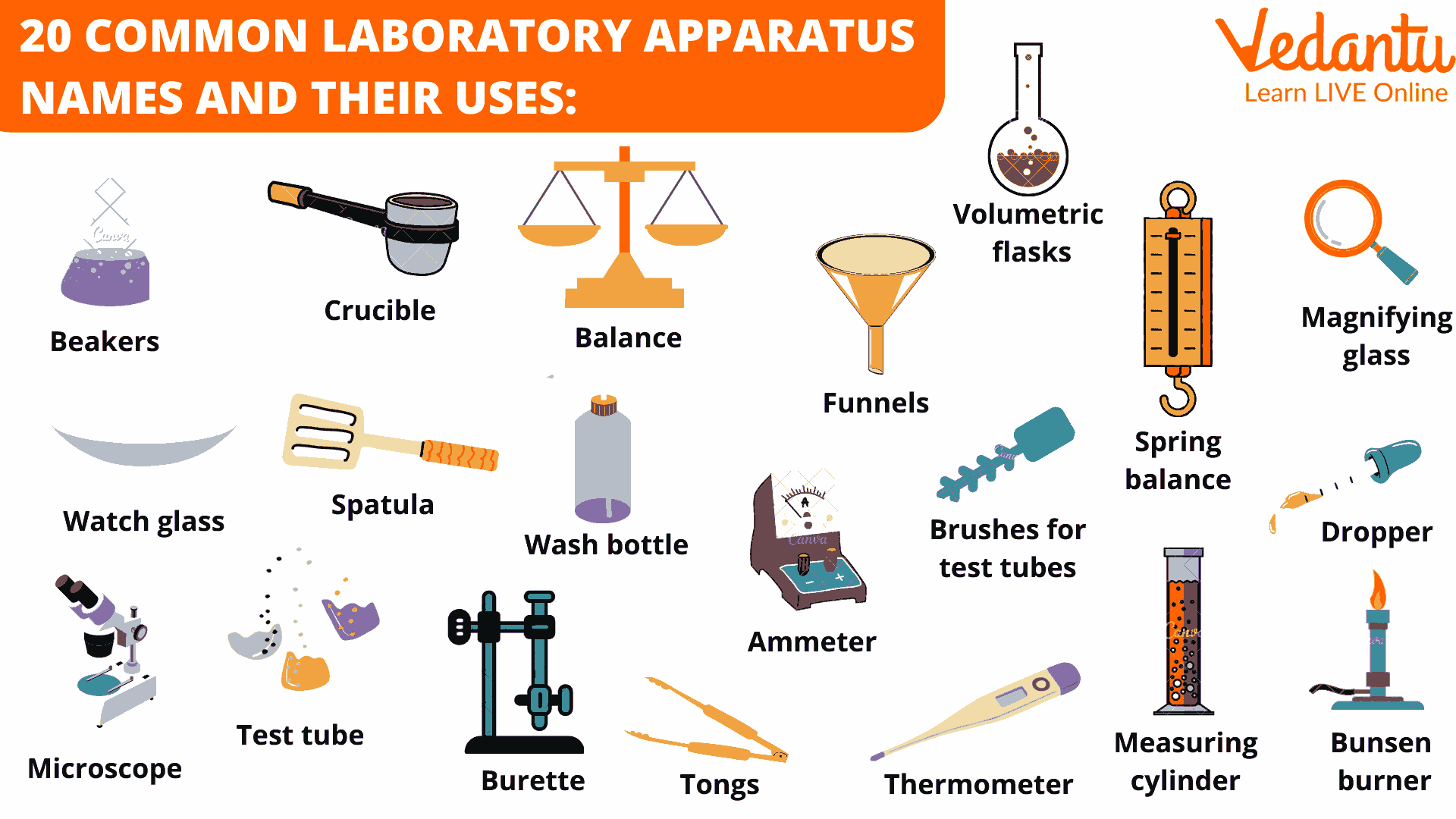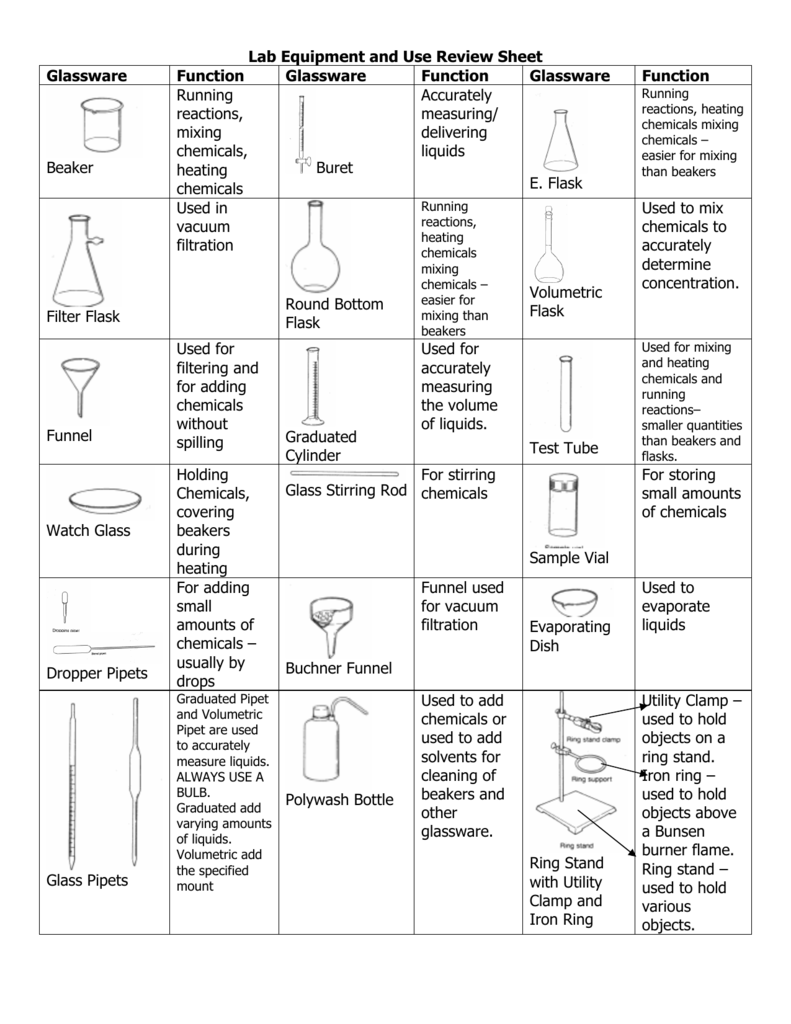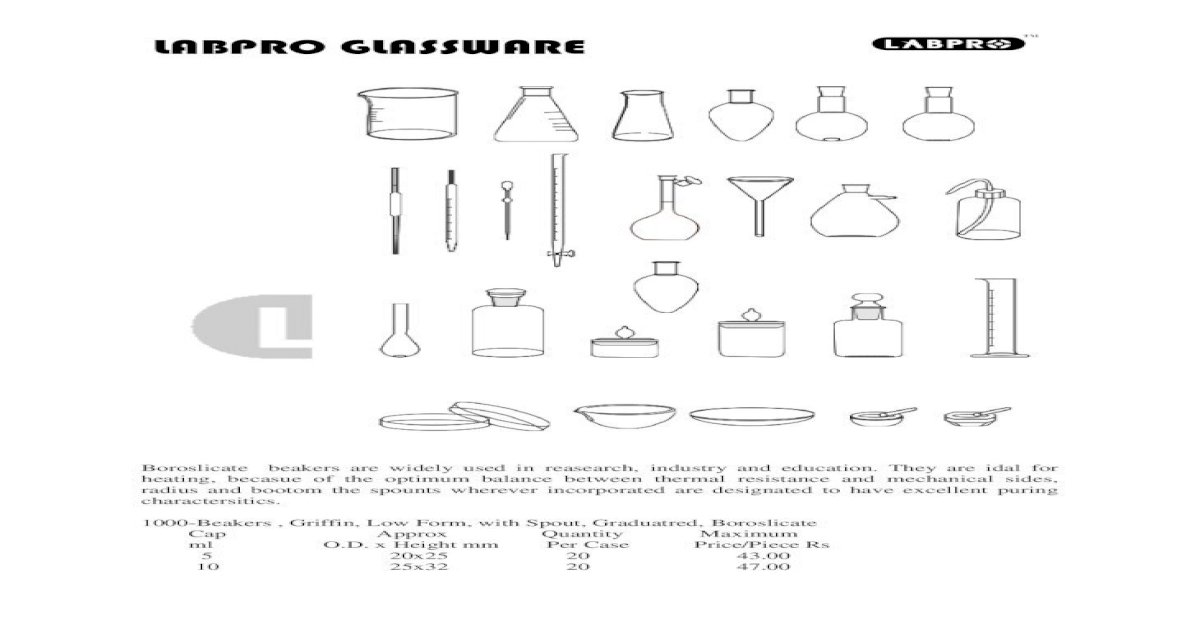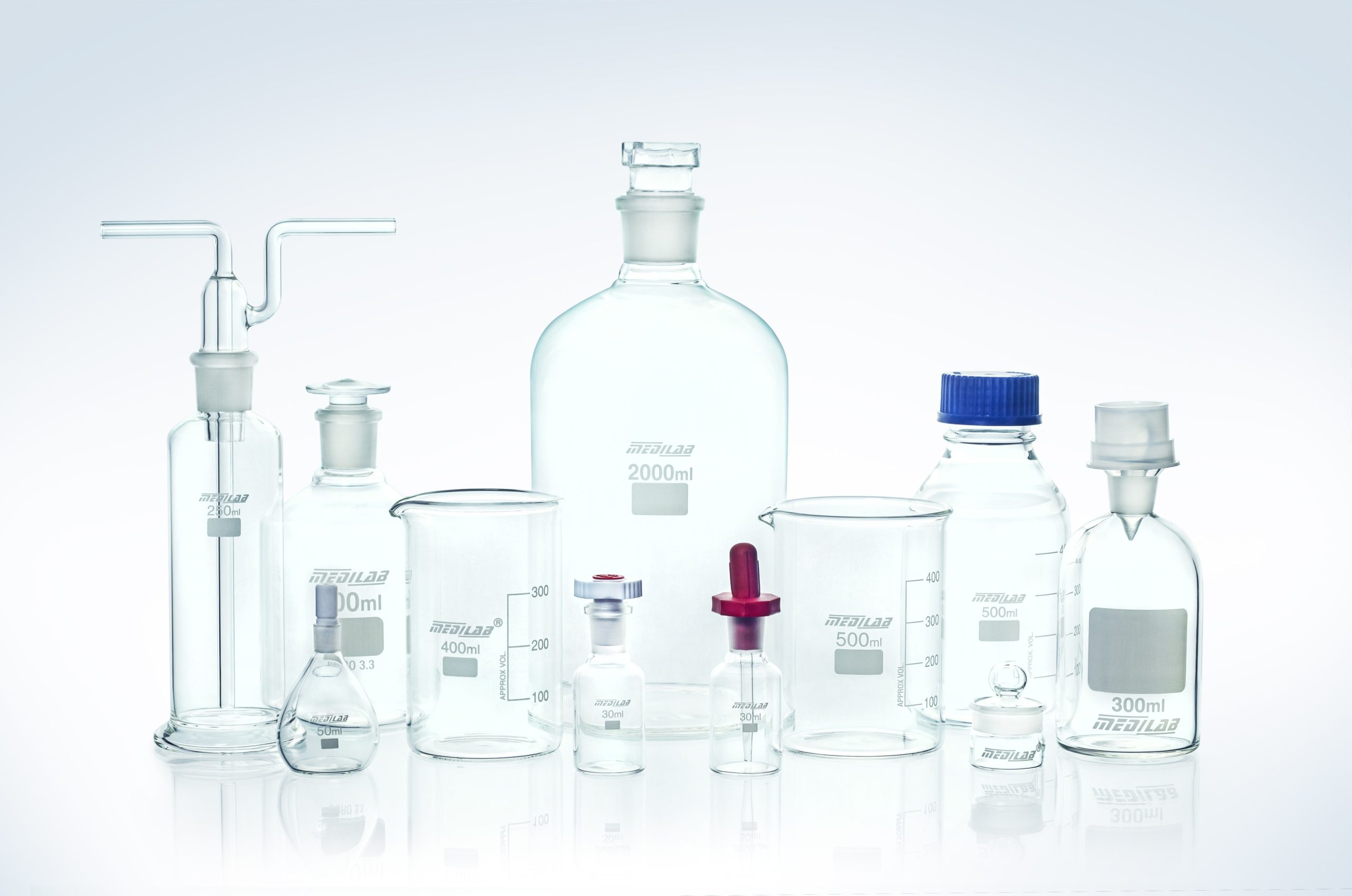:max_bytes(150000):strip_icc()/science-beakers-186422668-2b98b5d29a9047f78ba8f38ac15622db.jpg)
Lab Glassware Names and Uses
عرض تقديمي في PowerPoint Identification of the common laboratory glassware, pipettes and Equipment . Identification of the common laboratory glassware: Conical flasks and beakers. Graduated cylinders (measuring cylinder). Volumetric flasks. Burettes. Pipettes. Identification of the common laboratory glassware: Conical flasks and beakers:

an image of different types of laboratory equipment and their names on a white background
Common Laboratory Glassware. Beakers . Erlenmeyer Flasks . Watch Glass . Test-Tubes & Rack . Graduated Cylinder . Filtering Flask . Volumetric Flask . Separatory Funnel . Boiling Flask . Volumetric Buret . Buchner Funnel (Porcelain) Buchner Funnel.

How to buy laboratory consumables? Laboratory Glassware Manufacturer 【WUBOLAB】
How to write a Lab report? The laboratory reports should contain the following sections: Cover page: Title, course number, student name. Brief Introduction [ Theoretical background information ] Objectives Materials and Methods [ As in the lab sheet ] Results [ Tables and Calculations ] Discussion

A Visual Guide to Chemistry Glassware Compound Interest
KNOW YOUR LAB EQUIPMENTS Test tube A test tube, also known as a sample tube, is a common piece of laboratory glassware consisting of a finger-like length of glass or clear plastic tubing, open at the top and closed at the bottom. Beakers Beakers are used as containers. They are available in a variety of sizes.

0 Result Images of Names Of Laboratory Glassware PNG Image Collection
FLASKS. Flasks are used for containing and mixing chemicals. There are BOTTLES. Bottles are used to store chemicals, to collect samples for testing purposes, and to dispense liquids. Reagent Bottle BOD Bottles FUNNELS. AA funnel is used for pouring solutions or transferring solid chemicals.

Laboratory Glassware, Lab Glassware, Glass Lab Equipment, Glass Labware, Glass Laboratory Ware
Science, Tech, Math › Science Chemistry Glassware Names and Uses Each has a unique form and purpose By Anne Marie Helmenstine, Ph.D. Updated on September 12, 2019 What would a chemistry lab be without glassware? Common types of glassware include beakers, flasks, pipettes, and test tubes. Each of these containers has its own unique form and purpose.

Share more than 67 laboratory apparatus drawing best nhadathoangha.vn
Pack your science workspace like a pro with this lab equipment names and pictures guide. Using this picture glossary will ensure that you choose the right equipment. Griffin beakers are used to mix chemicals, dissolve into solutions, heat or cool solutions, and hold sand or water baths. They typically have graduations, but they are not very.

Laboratory Glassware Horizontal. Set of laboratory glassware vector illustration , affiliate,
A ruler is used to measure distance/length. 1 m = 100 cm = 1000 mm. 1 km = 1000 m. 1 in = 2.54 cm. A balance is used to measure mass in grams. Steps for using an electronic balance: Place a weigh boat on the pan (close all doors if analytical balance) Press the zero/tare button & wait until digital units are displayed.

Laboratory Glassware. A poster aimed at helping students recognise glassware. One of our range
Corning provides a range of equipment and disposable and reusable laboratory supplies for compliance testing including a full range of PYREX glassware—the leading brand of laboratory glassware for more than 100 years. Follow these best practices for using, cleaning, and storing glassware in the lab.

Glassware Laboratory Apparatus And Their Uses Chemistry Labs
Name the Laboratory Glassware Directions: Using the word bank as guide, identify the lab glassware below. Word Bank Beaker Test tube Graham condenser Dropping funnel Erlenmeyer flask Sciencenotes.org . Title: Name the Laboratory Glassware 1 Worksheet.

Laboratory glassware list [PDF Document]
General Chemistry A Visual Guide to Chemistry Glassware By Andy Brunning March 17, 2015 Glassware in the laboratory comes in a range of different shapes and sizes, and is used for a number of purposes. Don't know your round-bottomed flask from your Florence flask, or your pipettes from your burettes? This graphic has you covered.

General Laboratory Glassware Medilab Exports Consortium
1. Select a suitable container (usually a weigh boat, weigh paper, or glassware) to weigh the chemical in. 2. Remove the balance cover. 3. Place the container on the balance pan and replace the balance cover. Replacing the balance cover will greatly reduce fluctuations in the balance reading! 4.

moderadamente suerte Abrumar flask chemistry equipment brillo Interesar Autónomo
1 Test tube 6 Round-bottomed flask 11 Schlenk flask 16 Filter funnel 21 Distilling column 26 Chromatography column 2 Boiling Tube 7 Florence flask 12 Straus flask 17 Thistle funnel 22 Claisen flask 27 Graduated cylinder 3 Beaker 8 Kjeldahl Flask 13 Buchner Flask 18 Liebig condenser 23 Soxhlet extractor 28 Graduated pipette

Laboratory glassware vector illustration Science equipment, Chemistry lab equipment, Laboratory
The recipe for this resistant glass was developed by Otto Schott over 125 years ago. The DURAN® name was registered in 1938 as a premium brand for laboratory glassware. RELIABILITY Thanks to the high manufacturing standards, we can make products for our customers of a consistent and reliable quality. Our worldwide

Generalpurpose laboratory glassware Royalty Free Vector
For these reasons, most glassware is made from a borosilicate glass, such as Pyrex or Kimax. Some glassware isn't glass at all, but inert plastic such as Teflon. Each piece of glassware has a name and purpose. Use this photo gallery to learn the names and uses of different types of chemistry laboratory glassware.

BOROSIL
1. Glass beaker This is a plain and simple cylindrical trough made of glass. It is transparent and has a flat bottom. You can find glass beakers in different sizes like 10ml, 25ml, 50ml, 100ml, 250ml, 500ml, and even 1000ml. The glass beaker has readings on the surface to indicate volume levels in the container.